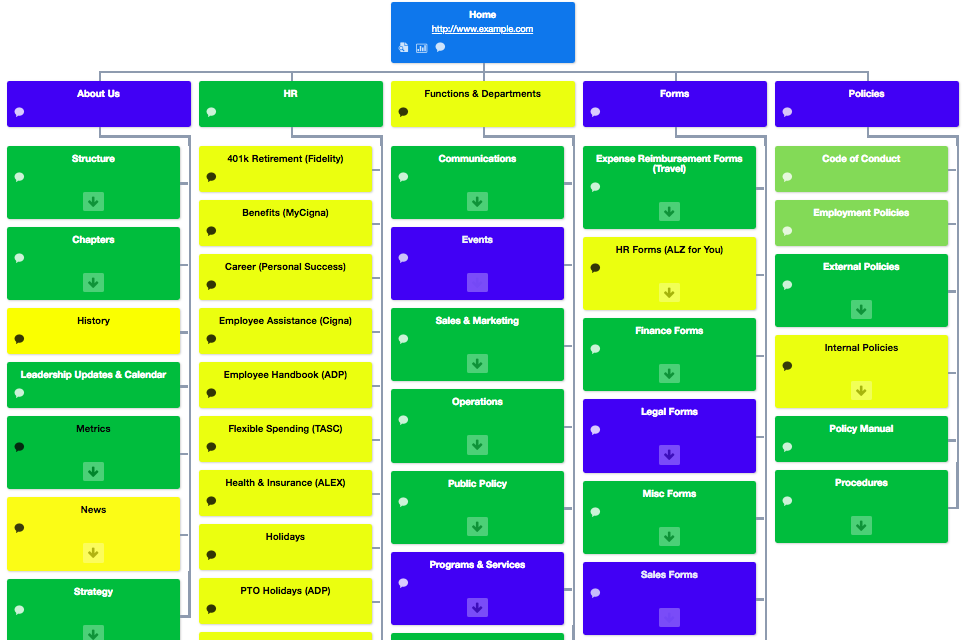I can’t find anything!
This is the number one ‘intranet’ complaint of most employees at most organizations, regardless of size, industry and geographic location. Notwithstanding the effectiveness of the search engine which, more often than not, is rated as being somewhere between ‘awful’ and ‘piss-poor,’ information architecture is often the top priority of most intranet managers when undertaking a redesign.
Intranet information architecture (IA) is part science, part art. As it relates to the intranet, the IA is best represented by a site map or organization chart of the major information or content categories (parents) and the sub-categories (children) and how they all relate to each other. Intranet information architecture is generally defined as the content structure of a website or intranet, or the structure or framework for how content is categorized and labeled in relation to other content. In short, IA is the art and science of structuring, labeling and categorizing content.

And yet, most intranets fail to understand the most critical component of an effective intranet information architecture — employees need to construct the information architecture. This is not to say that actual employees do the physical architecture, but rather must be involved in the process and formally engaged via interviews, testing, and card sorting. An expert should craft the final information architecture, but not without first intimately knowing and understanding the common vernacular, language, and specific needs of the employee audience.
You wouldn’t design your own building would you? No, nor would an architect design and construct without your input and feedback.
The ultimate goal of the intranet manager, architect and/or consultant is to create an ‘intuitive’ IA with information categories and navigation paths that are intuitive or easily understood at a glance. Of course the principal challenge of any information architect is that what is intuitive to one person is not always intuitive to another. In other words, you cannot borrow or replicate an award-winning intranet information architecture from some other organization – it will not work.
When redesigning an intranet or portal, there is a natural inclination by some architects and consultants to reinvent the IA to best reflect ‘best practices’ and/or the IA or labels used by others with successful and intuitive IA’s. This of course is a dangerous trap. No outside consultant or architect could truly appreciate and know intimately the culture and the formal and informal corporate nomenclature as those who have worked for an organization for years.
Often the best labels for a content category (intranet section) is the label, that may not be that sexy, but has been there for 8 or 10 years, and all employees have come to know intuitively. For the information architect doesn’t reinvent the wheel by creating sexy labels (think about the My-this, My-that labels that were so de rigueur some 10 years ago), but labels content so they’re the most visually intuitive at-a-glance to all employees.
CONTINUE READING: Intranet Information Architecture: Don’t Reinvent the Wheel
NEXT WEBINAR:
Also read: The design process: How to redesign your intranet
